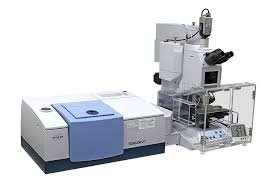SOP for Performance Check of Fourier Transform Infrared.

Standard Operating Procedure (SOP)
Here’s a detailed Standard Operating Procedure (SOP) for Performance Check of Fourier Transform Infrared (FTIR) Spectrometer. This SOP is designed to ensure that the FTIR instrument performs reliably and accurately during routine use.
1. Objective
To define the procedure for performing a routine performance check of the Fourier Transform Infrared (FTIR) Spectrometer to ensure its accuracy and precision for qualitative and quantitative analysis of samples.
2. Scope
This procedure applies to all FTIR spectrometers used for routine analysis and research purposes at [Company Name].
3. Responsibilities
-
Analyst/User: Perform the FTIR performance check and record results.
-
QA/Lead Analyst: Review performance check results and ensure compliance.
-
Maintenance Technician (if applicable): Assist with troubleshooting and calibration if necessary.
4. Definitions
-
FTIR Spectrometer: An analytical technique used to obtain an infrared spectrum of absorption or emission of a solid, liquid, or gas sample.
-
Performance Check: The process of verifying the proper function and calibration of the FTIR instrument.
-
Resolution: The ability of the FTIR to distinguish between two peaks in the spectrum.
-
Signal-to-Noise Ratio (SNR): The ratio of the signal strength of a peak to the baseline noise in the spectrum.
-
Wavelength Calibration: The alignment of the FTIR spectrometer to ensure accurate wavelengths in the spectrum.
5. Materials and Equipment
-
FTIR Spectrometer (e.g., PerkinElmer, Agilent, Thermo Fisher, etc.)
-
Polystyrene or NIST traceable calibration standards
-
Clean sample holders or substrates
-
Clean lint-free wipes
-
Standard Operating Procedures for FTIR
6. Procedure
6.1 General Setup and Preparation
-
Turn on the FTIR Spectrometer: Allow the system to warm up for the recommended time (typically 30 minutes) before use.
-
Check the ambient conditions: Ensure the temperature, humidity, and other environmental conditions are within the manufacturer’s recommended range.
-
Check the sample compartment: Ensure the sample compartment is clean and free of debris.
6.2 Perform Background Scan
-
Run a background scan (empty sample holder, no sample) to account for any interference, such as atmospheric CO₂ and H₂O.
-
Ensure the baseline is stable with no significant drift or noise.
-
Record the baseline data and confirm no significant noise is present in the spectrum.
6.3 Resolution and Wavelength Calibration Check
-
Resolution Check: Run a polystyrene film or a NIST-certified resolution standard. The standard should produce distinct peaks at specific wavelengths (usually around 1600–1800 cm⁻¹).
-
Verify that the FTIR resolves peaks clearly. If the peak resolution is poor or the peaks are broadened, the instrument may need recalibration.
-
Acceptance Criteria: Peak separation must meet the instrument specifications for resolution.
-
-
Wavelength Calibration: Verify the FTIR’s accuracy in identifying known wavelengths (e.g., polystyrene standard).
-
Ensure that the peak locations are within the tolerances specified by the manufacturer (typically ±1 cm⁻¹).
-
If the wavelengths are off, the instrument may need recalibration.
-
6.4 Signal-to-Noise Ratio (SNR) Check
-
Perform a scan of the polystyrene or NIST standard.
-
Check the Signal-to-Noise Ratio at a known absorption peak (e.g., 1601 cm⁻¹ for polystyrene).
-
The signal should be significantly higher than the baseline noise.
-
Acceptance Criteria: A good SNR should be at least 100:1 at the selected peak for routine applications.
-
6.5 Detector Performance
-
Run a standard sample to assess detector performance (e.g., polystyrene film or similar calibration material).
-
Evaluate the intensity and linearity of the peaks.
-
Ensure that there are no sharp drifts or irregularities in signal intensity across the spectral range (typically 4000 to 400 cm⁻¹).
-
Acceptance Criteria: The intensity of the peaks should be stable with no significant decrease or increase in signal over time.
-
6.6 Optical System Check
-
Interferometer Check: Verify that the interferometer is properly aligned and functioning.
-
Beam Alignment: Check the beam for correct alignment through the optical system.
-
Run a scan of a known reference sample and verify the spectrum’s reproducibility.
-
Acceptance Criteria: Reproducibility should be within ±0.1% for multiple scans.
-
7. Acceptance Criteria
-
Resolution: Must meet manufacturer specifications for peak width and separation.
-
Wavelength Calibration: Peak positions should be within ±1 cm⁻¹ of the expected values.
-
Signal-to-Noise Ratio: Should be ≥ 100:1 for the polystyrene standard or other reference materials.
-
Detector Performance: Peaks should be consistent, with no irregular intensity fluctuations.
-
Optical System: The optical alignment should produce stable and reproducible spectra.
8. Frequency of Performance Check
-
Daily/Before Use: Perform a basic check (e.g., background scan, SNR).
-
Monthly: Perform a full performance check, including resolution, wavelength calibration, and optical checks.
-
After Maintenance/Repairs: Perform a full performance check after any maintenance or repairs to the instrument.
9. Documentation
-
Performance Check Logbook: Record all performance check results including the date, operator name, and any corrective actions taken.
-
Calibration Certificate: Maintain calibration certificates for any standards used.
-
Out-of-Specification Report: Document and investigate any deviations from the acceptance criteria.
10. Abbreviations
-
FTIR: Fourier Transform Infrared Spectroscopy
-
SNR: Signal-to-Noise Ratio
-
NIST: National Institute of Standards and Technology
11. References
-
Instrument manufacturer’s user manual.
-
ISO 9001 (Quality Management Systems).
-
ASTM E1421 – Standard Guide for Infrared (IR) Spectroscopy.
🎓 Discover one of the best Quality Assurance courses available — click below to explore the course that’s shaping future QA skills.

